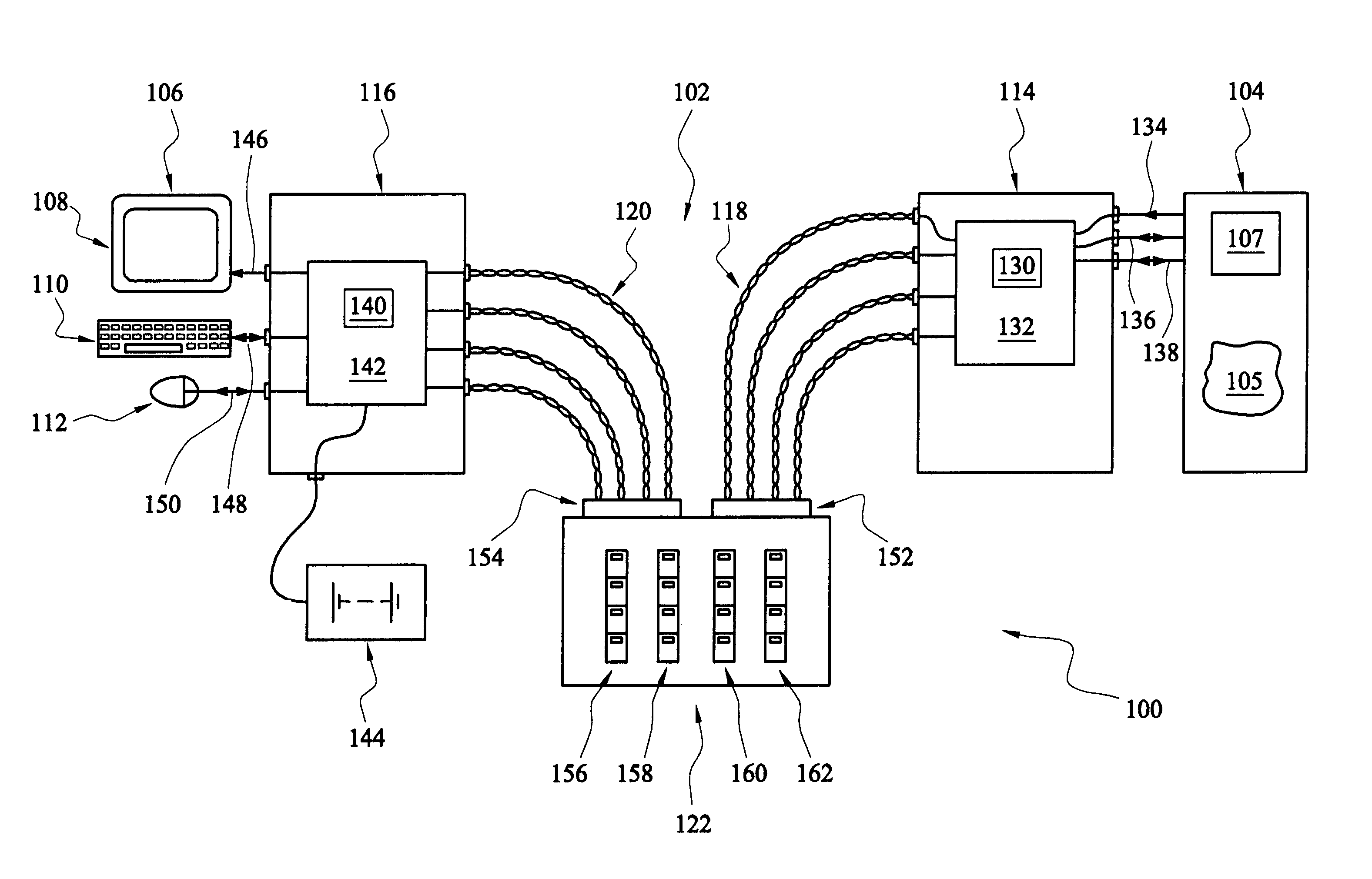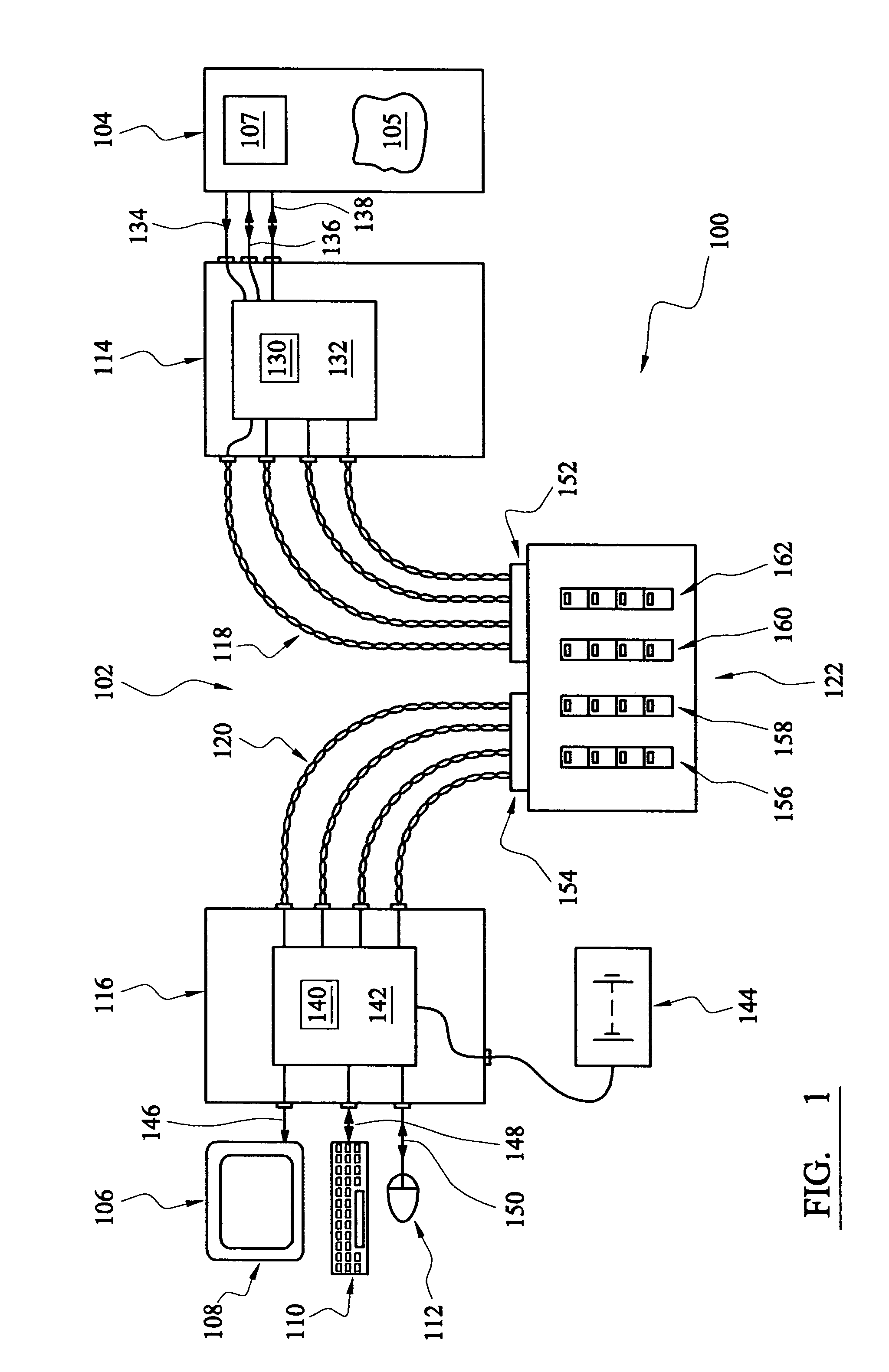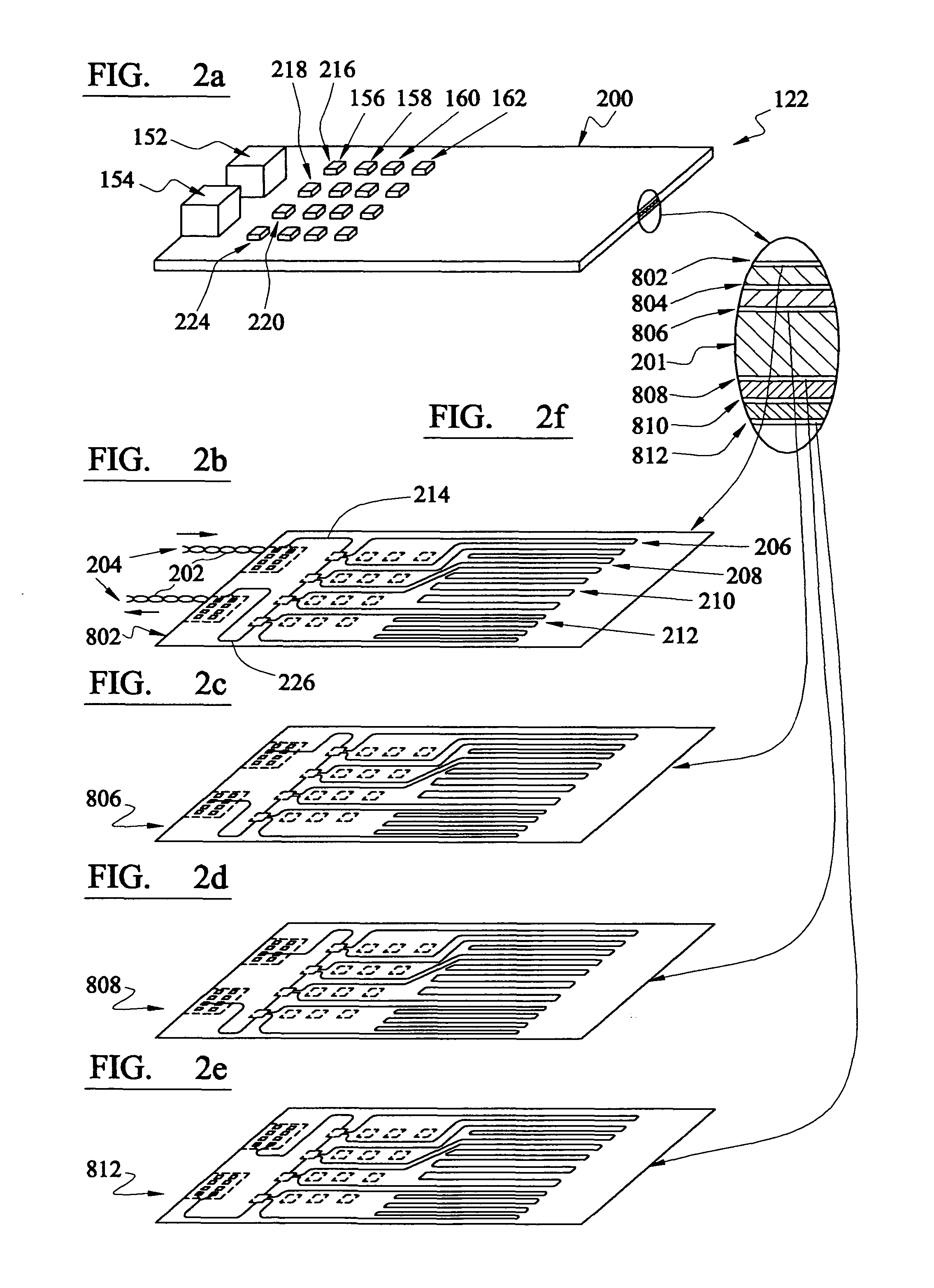Video signal skew
a video signal and skew technology, applied in the field of video signal skew, can solve the problems of degrading the image generated by the video display device, appearing ‘, and more noticeable colour split problems, so as to reduce the skew and increase the length of the video signal transmission path
- Summary
- Abstract
- Description
- Claims
- Application Information
AI Technical Summary
Benefits of technology
Problems solved by technology
Method used
Image
Examples
Embodiment Construction
[0037]With reference to FIG. 1, there is shown a computer system 100 including a KVM extender 102 connecting a computer 104 executing software 105 to a KVM console 106 including a monitor 108, keyboard 110 and mouse 112. KVM extender 102 includes a local unit 114 and a remote unit 116 connected by a four twisted pair cable 118, 120 via a video signal skew compensation device 122.
[0038]Local unit 114 includes a microprocessor 130 controlling various signal processing and routing devices 132 as will be described in greater detail below. Respective video 134, keyboard 136 and mouse 138 cables connect the video, keyboard and mouse ports of the computer 104 to connectors of the local unit by which video signals are supplied to the remote unit and keyboard and mouse signals are transmitted between the remote unit and computer. The video signal comprises red, green and blue colour signals and vertical and horizontal synchronisation signals.
[0039]Remote unit 116 includes a microprocessor 14...
PUM
 Login to View More
Login to View More Abstract
Description
Claims
Application Information
 Login to View More
Login to View More - R&D
- Intellectual Property
- Life Sciences
- Materials
- Tech Scout
- Unparalleled Data Quality
- Higher Quality Content
- 60% Fewer Hallucinations
Browse by: Latest US Patents, China's latest patents, Technical Efficacy Thesaurus, Application Domain, Technology Topic, Popular Technical Reports.
© 2025 PatSnap. All rights reserved.Legal|Privacy policy|Modern Slavery Act Transparency Statement|Sitemap|About US| Contact US: help@patsnap.com



